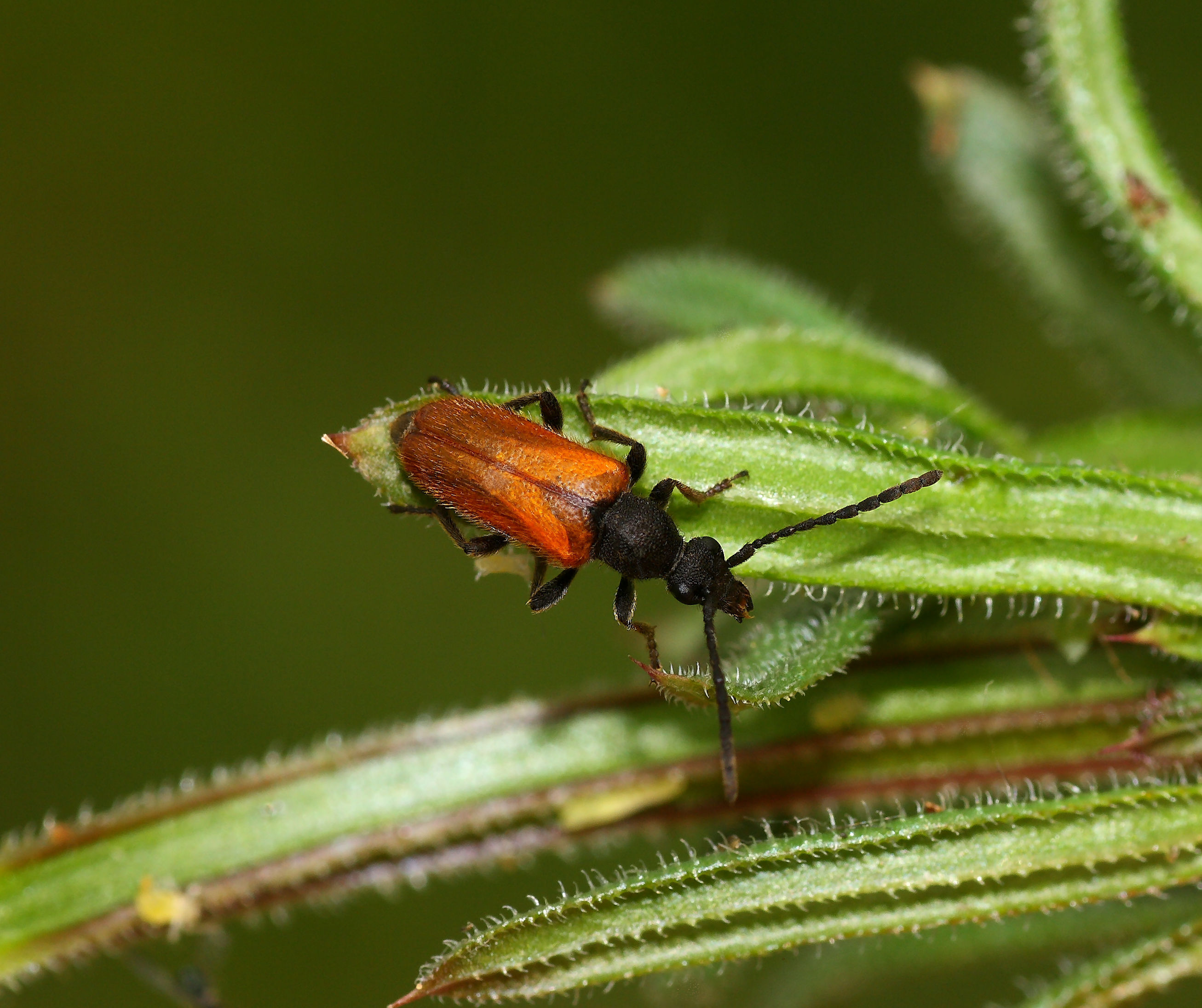DESCRIPTION: Length between 5mm and 9mm. The punctured head, filiform antennae and thorax of this species are black with the legs also dark although the anterior and basal tibiae are pale. The elytra are orange/red, noticeably punctured with a darker suture and have broadly rounded tips. The pubescence is semi-erect and directed backwards. BEHAVIOUR: Mating occurs on flowers early in the year and females oviposit in humus rich soil infested with the fungus Marasmius oreades, hence the beetles common name of Fairy-Ring Long-Horn. The species is a good flier and can be found in a variety of flower-rich situations. Larvae develop over two years feeding on roots, humus and the mycelium of the aforementioned species. They rest in the winter months and begin feeding again in the spring. DISTRIBUTION: Found in many areas of south-west Britain becoming absent in the north and very scarce in Wales. HABITAT: Open sunny areas are best especially meadows, flowery roadsides, hedgerows, park and wooded margins. PERIOD: Best seen between May and August.

